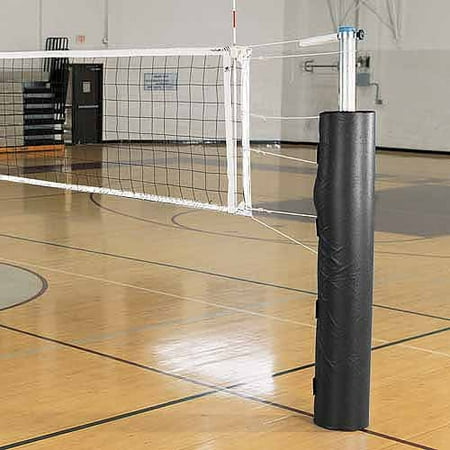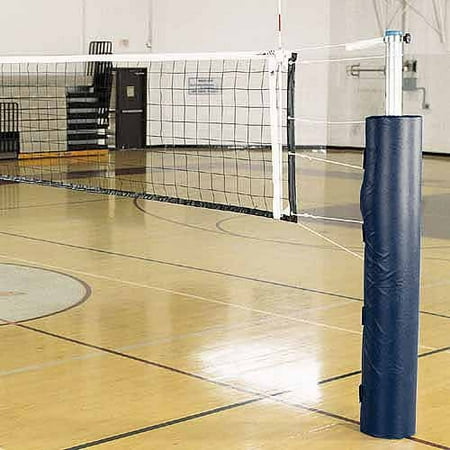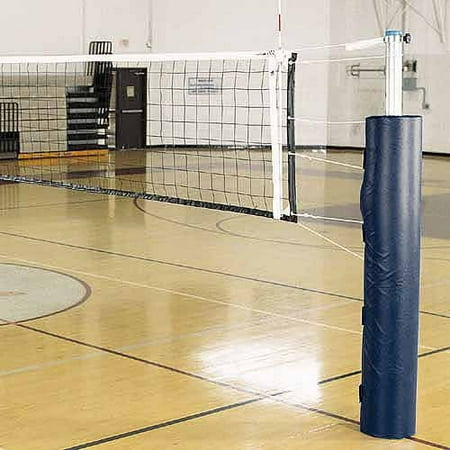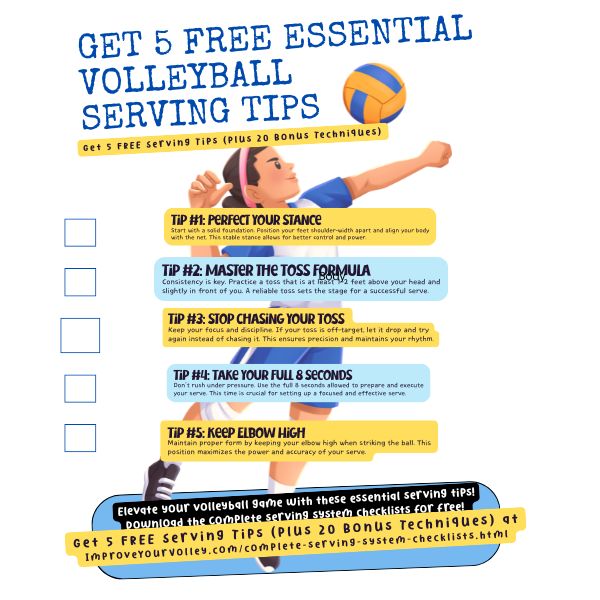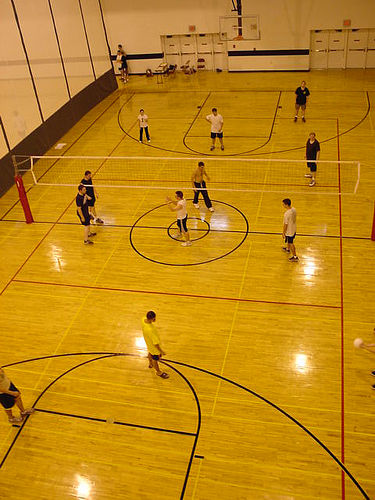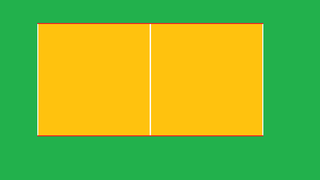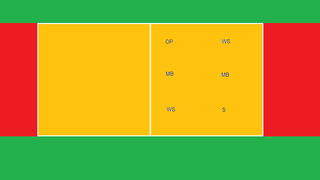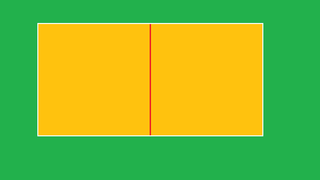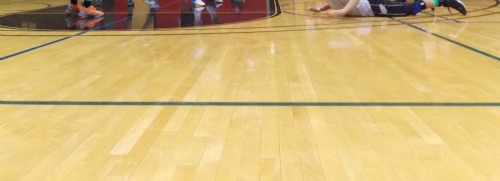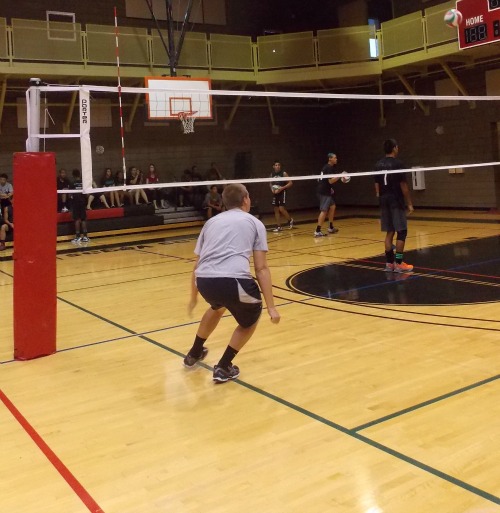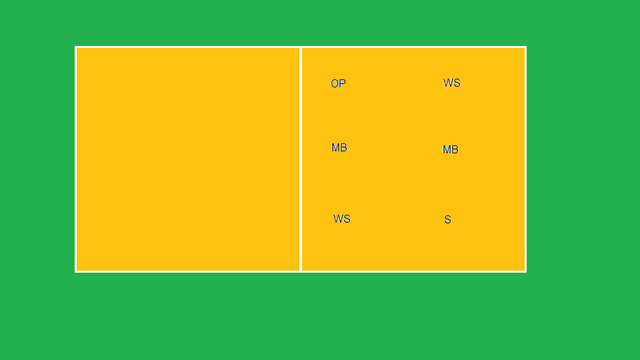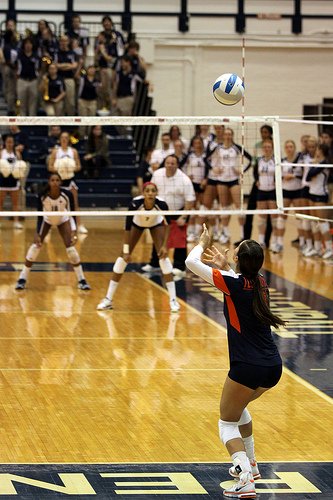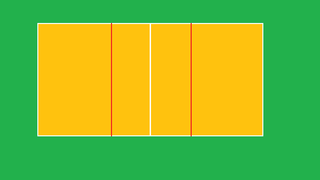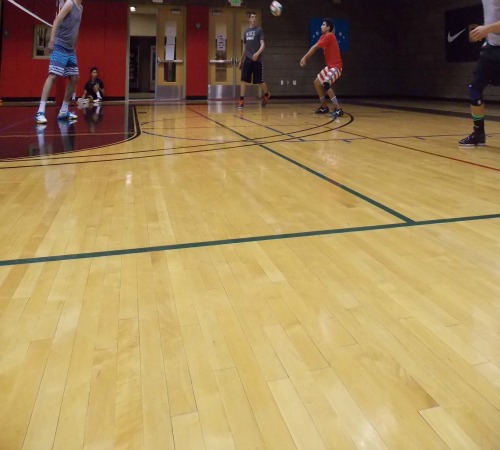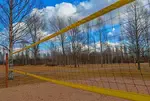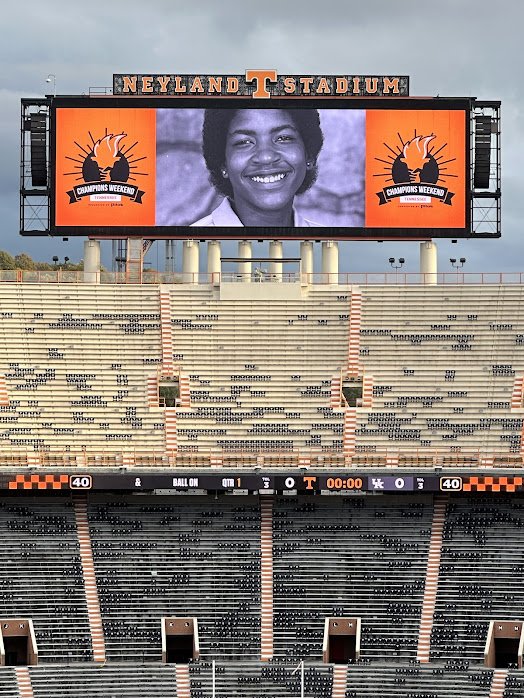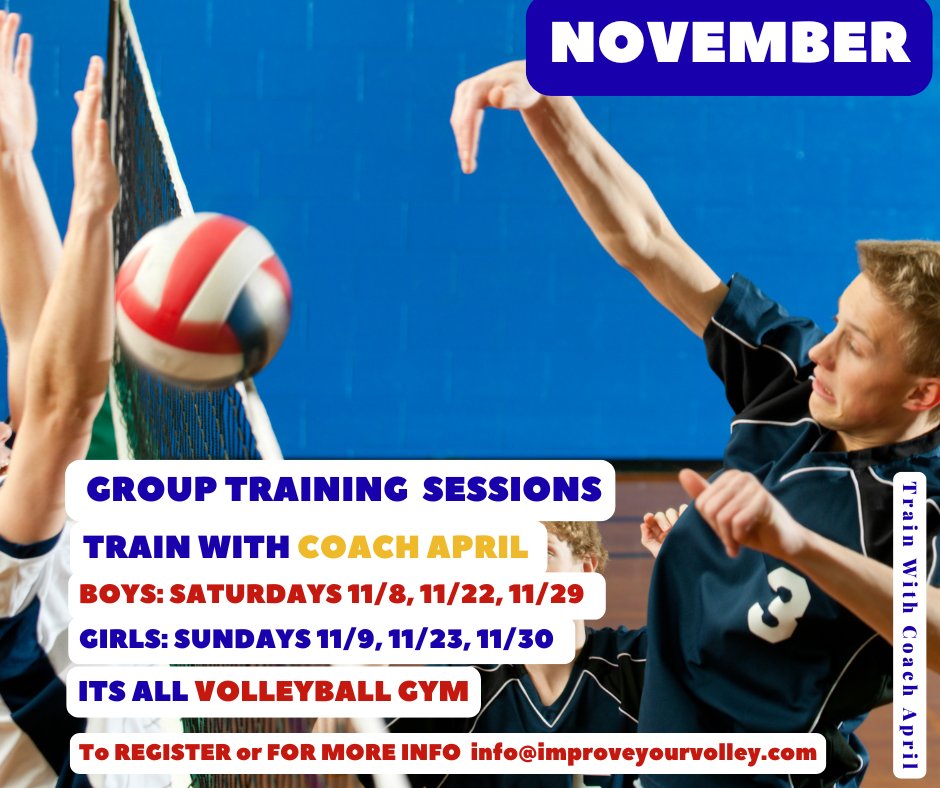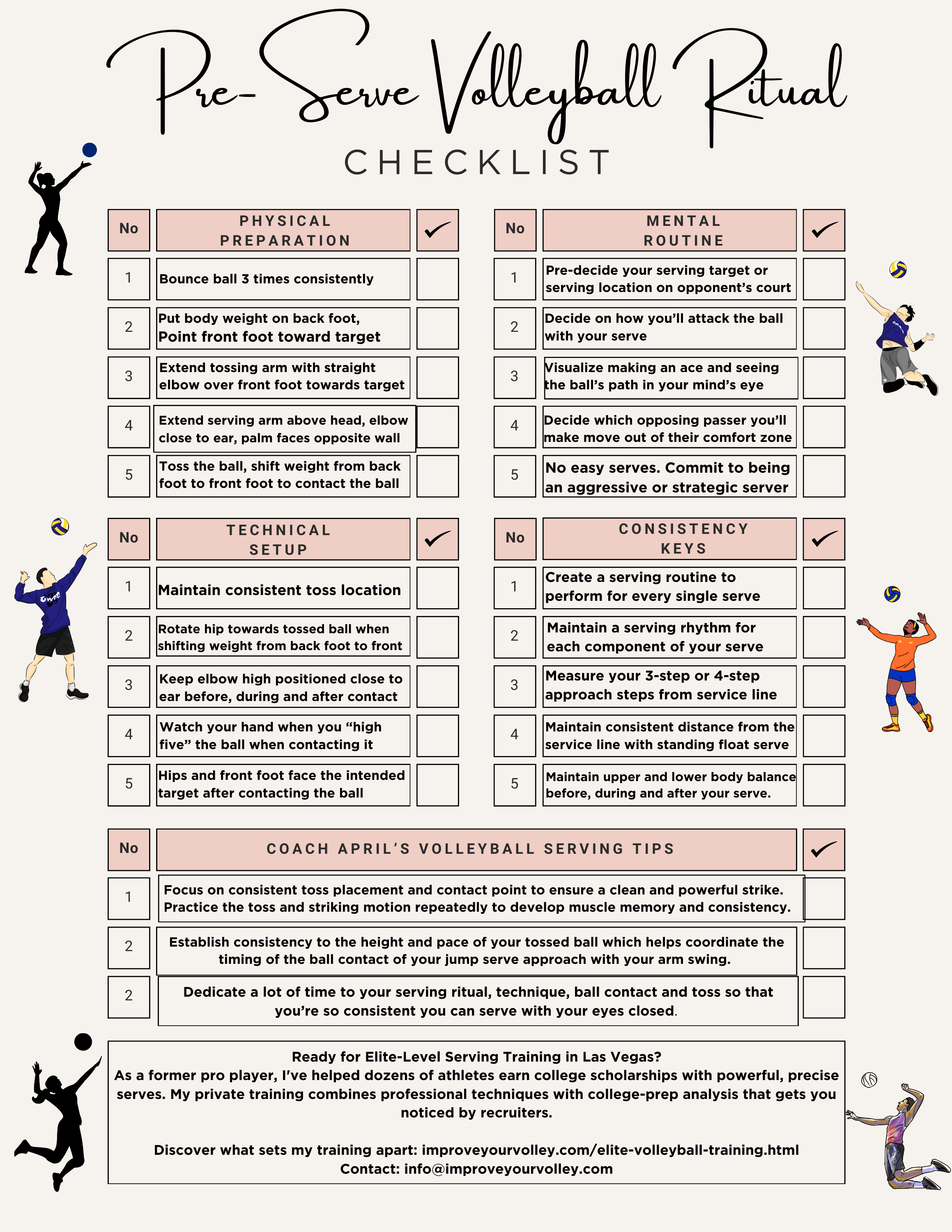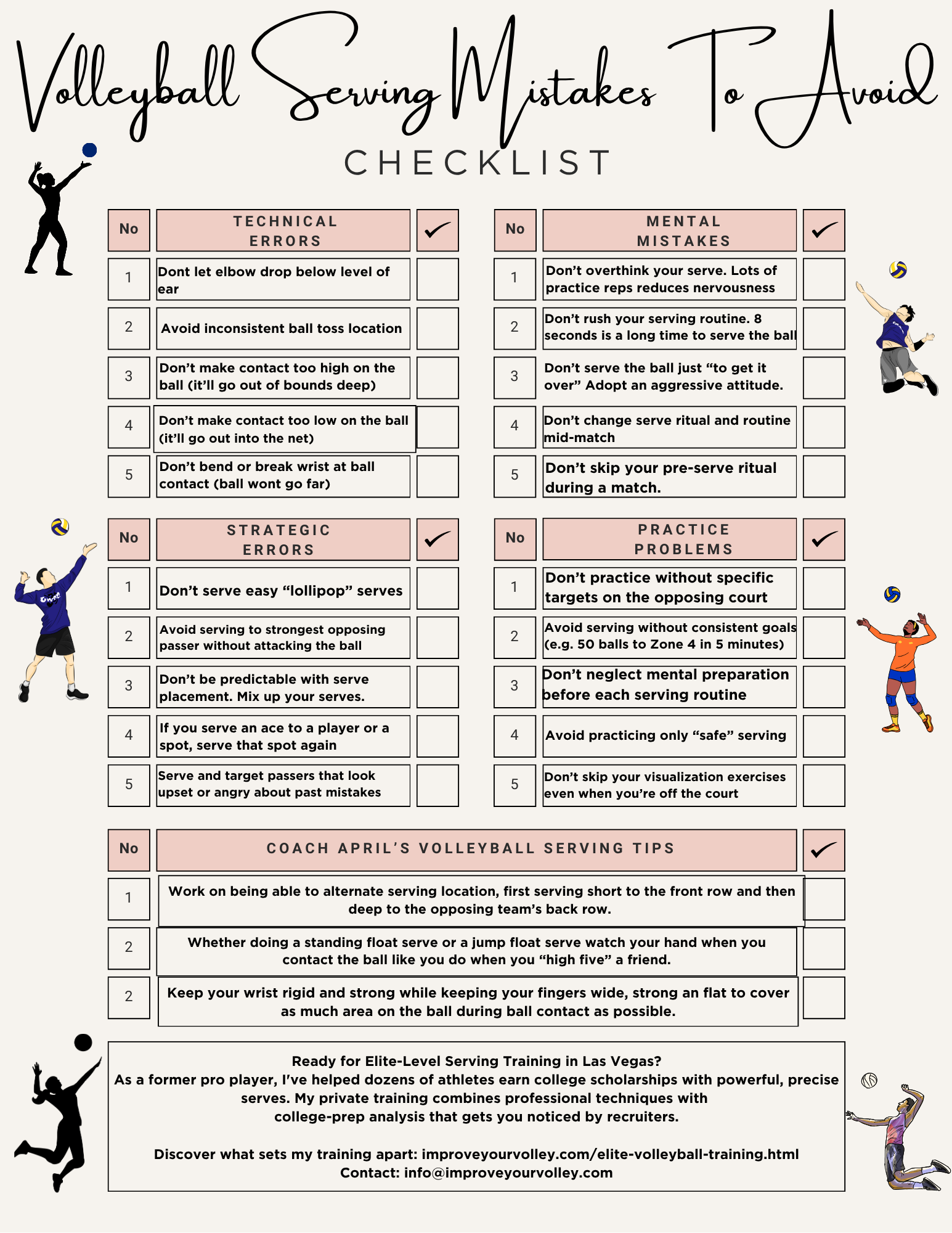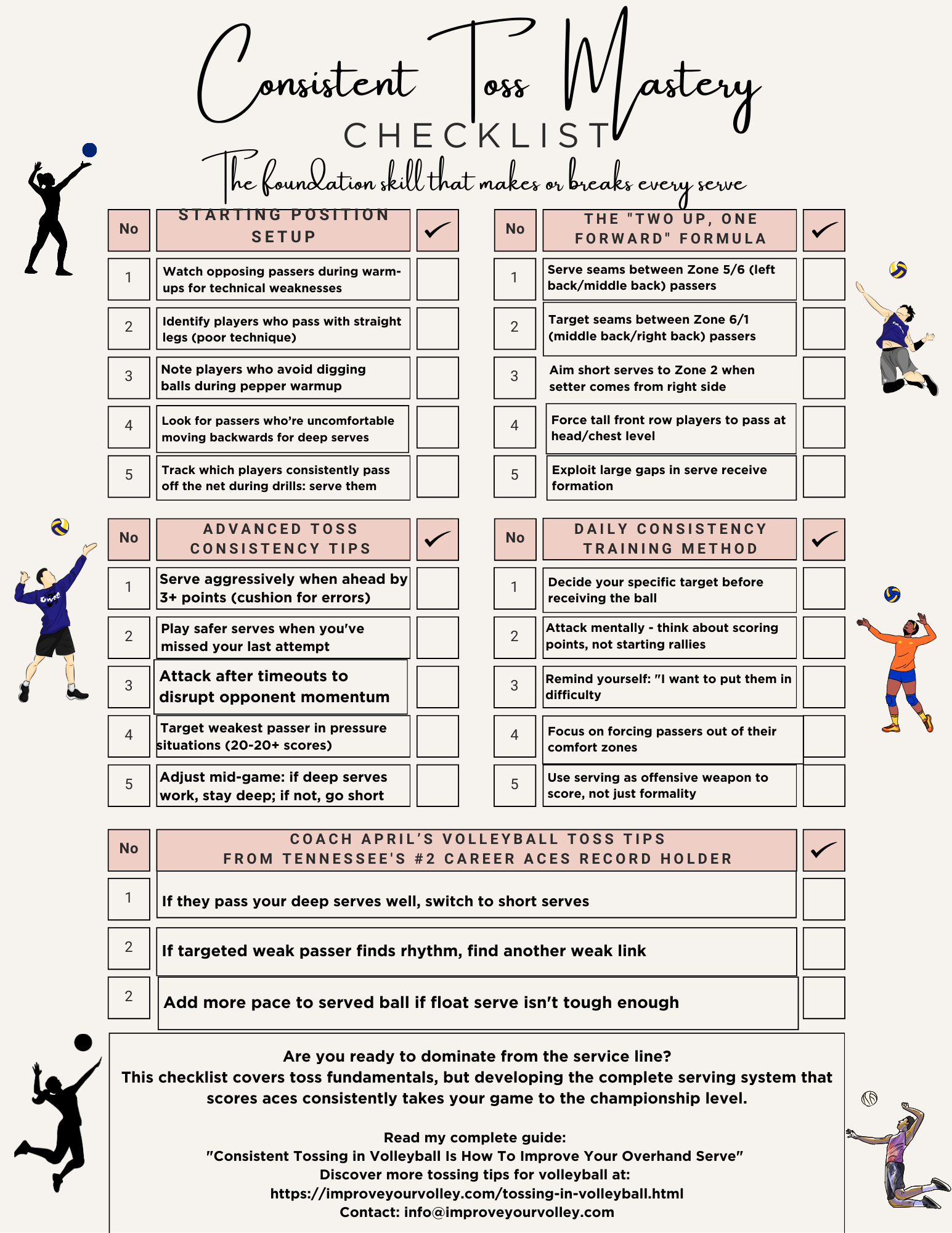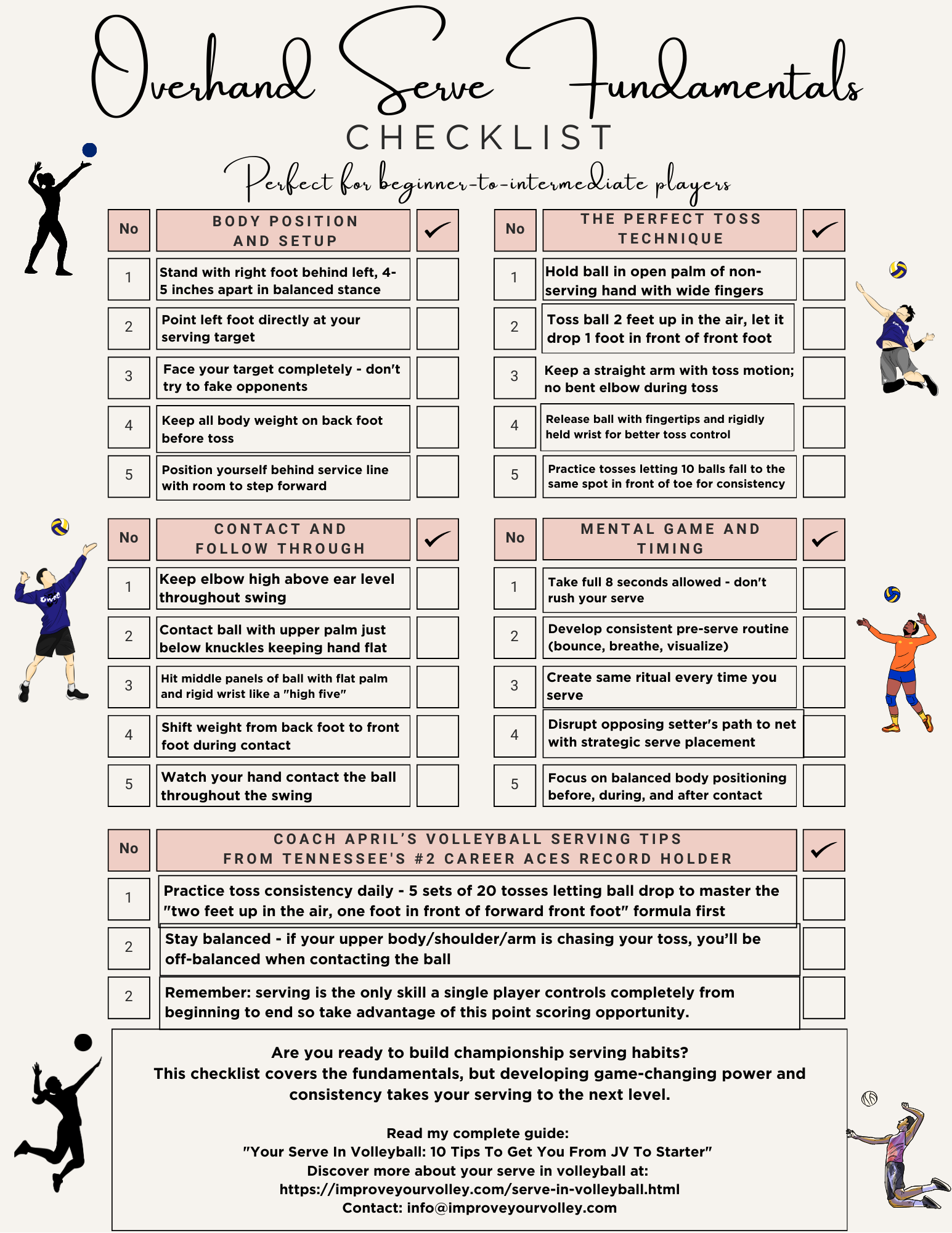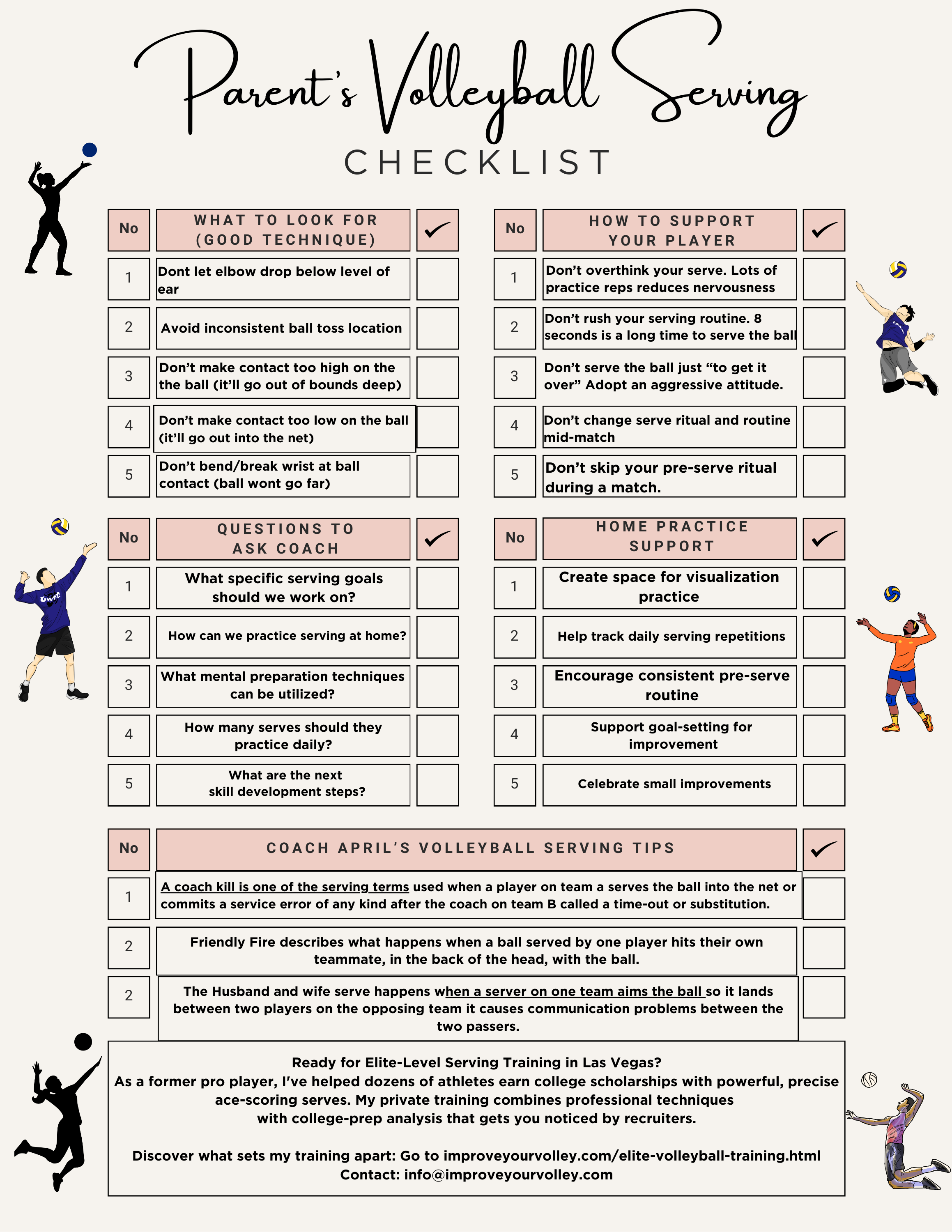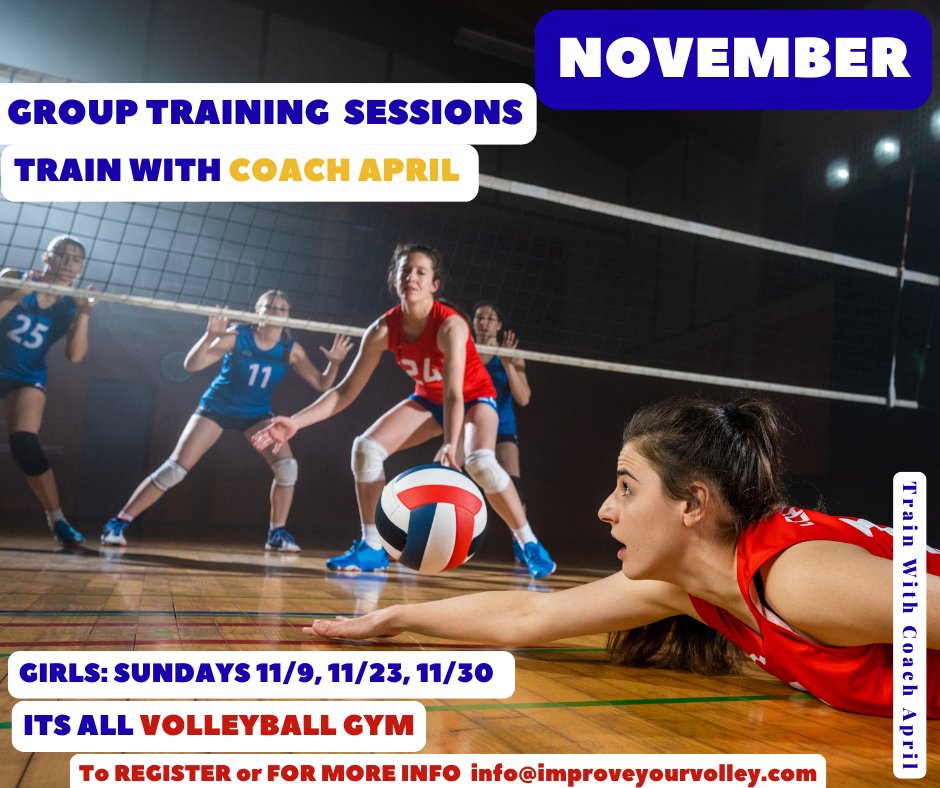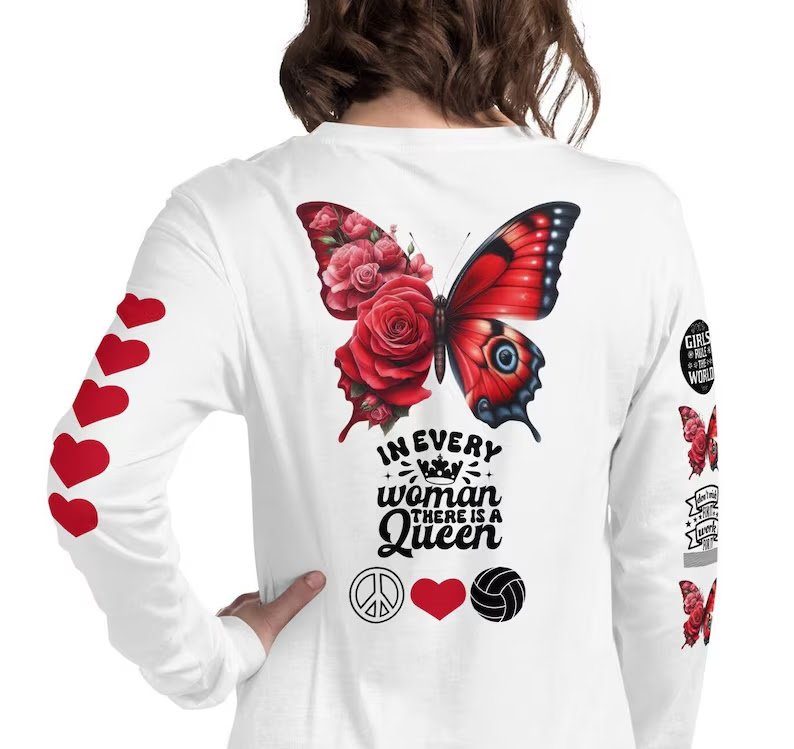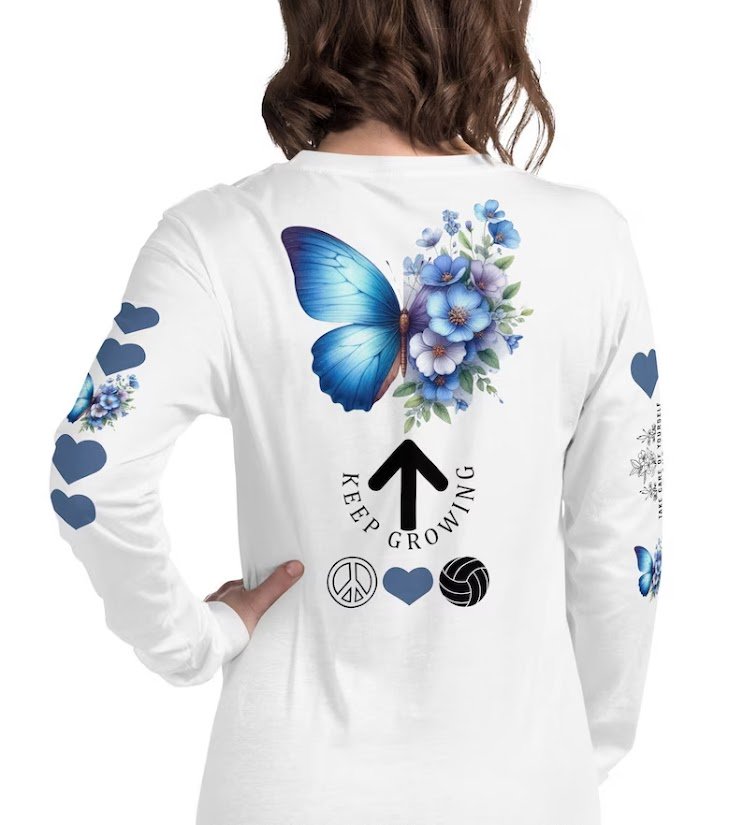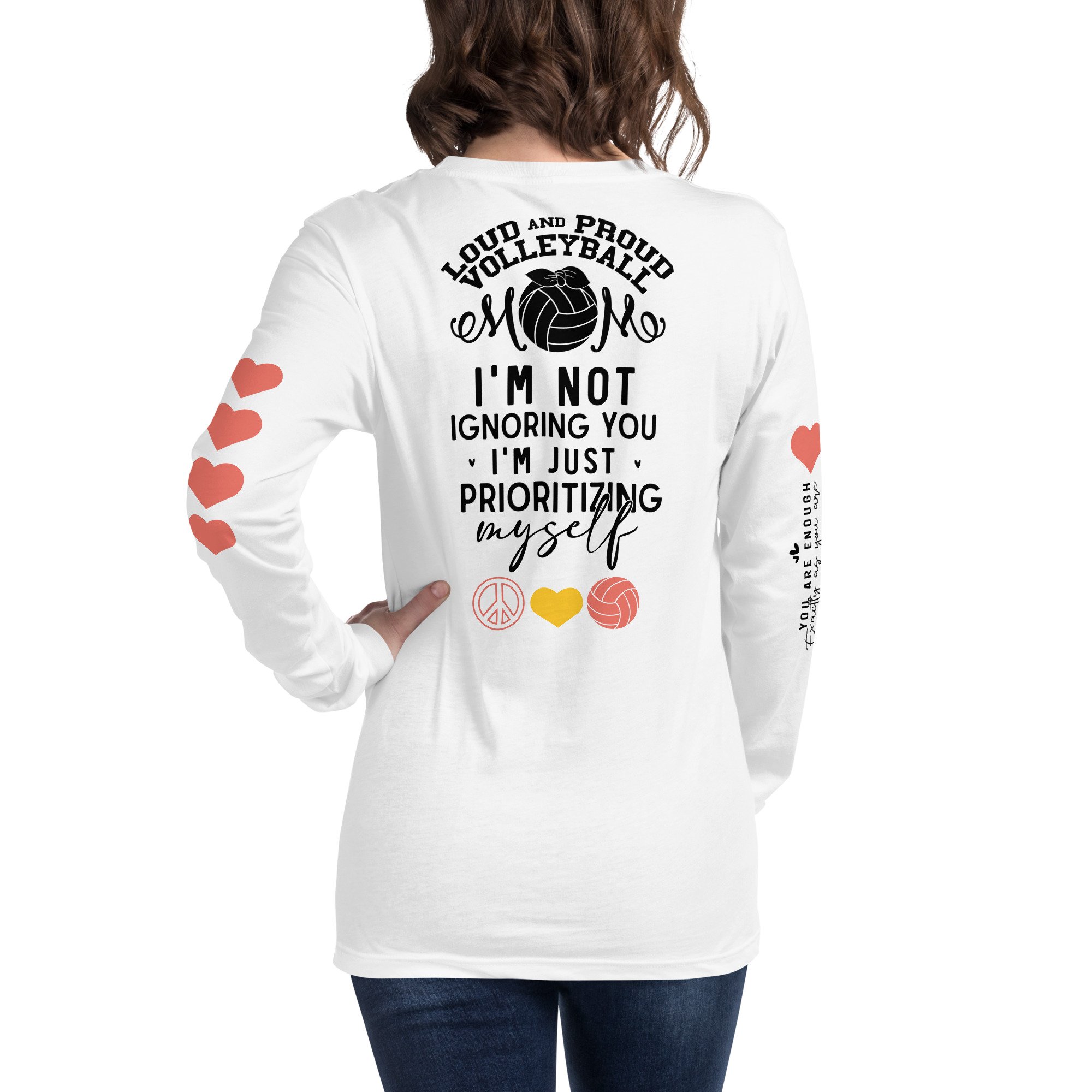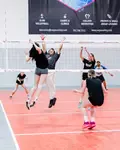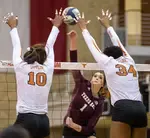- Improve Your Volleyball with Coach April
- Whats the Volleyball Court Size?
- Volleyball Lines
Volleyball Lines Sidelines EndLines Service Line 10 Ft Line Sub Lines
Volleyball lines: From the sidelines, service lines, end lines, ten foot line, substitution lines, find out which lines mean what.
Volleyball lines, how many are there?
- two parallel sidelines connected to
- two endlines that're perpendicular to these sidelines that run parallel to each other, while also serving as the two service lines.
There are
- two ten foot lines on both court halves separated by
- one centerline, all parallel to each other that connect the
- two sidelines, and divide the two court halves.
The ten foot lines run underneath and parallel to the net, between the two poles on a typical indoor volleyball court.
Did I miss anything?
There are many lines on the playing surface of a volleyball court.

Whose Line Is It Anyway?
On an indoor volleyball court, the sidelines and the service lines are painted to outline the internal area and the boundaries where the ball should be played.
In beach volleyball, there is no three meter or attack line and the sidelines and end line lines are portable synthetic cords that serve as the volleyball court marker to illuminate the court boundaries.
Where's The Center Line?
The center line separates one volleyball team's court from the other.
The centerline measures two inches wide and goes from sideline to sideline which divides the two playing courts into two 29 foot 6 inch halves where the teams play, one on one side and the opposing team on the other.
On an indoor volleyball court, it serves as the single fourth boundary line for both sides and is located directly underneath the net.
This centerline is a contrasting color so that it's plainly visible to players and referees most importantly as it stretches underneath the net.
To separate one team's front row from the other, it is placed an equal distance between the three meter lines of both sides.
The line in the left hand side of the frame, the dark blue one is the center line in the photo below.
Traditionally, neither blockers nor hitters were permitted to cross the center line with any body parts during the rally, but recently that rule was tweaked so that front row players are permitted to cross the center line as long as they do not interfere with the opposing team's ability to perform or complete an action.
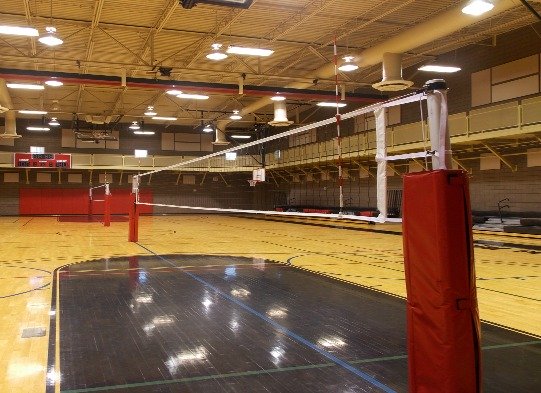
There is no visible center line underneath the net, in beach volleyball.
Where Are The Sidelines?
Since the volleyball court is shaped like s large rectangle, the sidelines are the longest lines located along the sides of that rectangle.
The sidelines, separated by the net, mark the longest boundaries of the court, where both teams remain inside of their designated area of the "rectangle" to play the match.
At the beginning of each rally, all six players on both teams must be in their starting rotation located within their team's sidelines.
In the front row, once the rally has started, the outside hitters on the team that's on offense can move outside the sidelines to make their spike approach.
The sidelines serve a crucial role in volleyball as they define the boundaries of the playing area.
These lines run parallel to the longer edges of the court, marking the outermost limits where the ball can be played.
When a ball is hit or touched, it must remain within the bounds defined by the sidelines.
If the ball crosses over the sideline, it is considered out of bounds, resulting in a point or serve for the opposing team.
The sidelines play a vital role in determining whether a ball is in or out, helping the referees and players make accurate decisions during the game.
Where Are The End Lines
on the Court?
The end lines, which are perpendicular to the sidelines, mark the shorter boundaries of the volleyball court.
Together with the sidelines, they define the rectangular playing area.
Like the sidelines, the end lines play a crucial role in determining whether a ball is in or out of bounds.
Any ball that crosses over the end lines is considered out of bounds, resulting in a point or serve for the opposing team.
The end lines also help players and referees accurately judge whether a ball is played within the legal playing area.
Furthermore, they provide a reference point for players to position themselves during the game, ensuring that they are within the designated court boundaries for fair and proper gameplay.
Where Is The Service Line?
Of all the volleyball lines on the playing surface, the service line is the farthest boundary line from the net.
It's parallel to the ten foot and center line and marks the closest spot where a player can stand in order to serve the ball over the net at the beginning of each rally.
At the beginning of a play, if a volleyball player steps over the service line while serving, she has committed a service error.
If a player chooses to jump serve they can't touch the end line or the court before they contact the ball to serve it. Only after they've made contact with the ball can they land on the other side of the service line, in the court.
Volleyball Lines:
Where's The Attack Line?
There's an attack line on each side of the court and it's located three meters or approximately ten feet from the net on either side.
It exists to separate the front row players from the back row players and it creates a point of reference in the rotation.
Front row hitters use the attack line to gauge how far back they need to be in order to begin their spike approach, while back row hitters know that they can only attack a ball that's been set to them, behind this attack line.
Where's The Ten Foot Line?
The ten foot line, is the same line as the attack line and/or the three meter line.
The name of these court lines will change depending on who you play against and in what city, state or country you play the game.
Located on both sides, this line is ten feet or three meters from the net, runs parallel to the net, and it separates the front row players from the back row players.
If you are a libero who sets the ball to a front row spiker on your team, according to basic volleyball rules for liberos, you must be behind the ten foot line in order for your spiker to be able to take a spike approach and hit the ball above the level of the net.
If you are inside this line, the spiker must keep both feet on the ground when they send the ball over the net.
Where's The Three Meter Line?
As explained previously, the name for court lines parallel to the center line is the three meter line or the ten foot line.
Three meters measures out to be ten feet so for those people who use the metric system they will call this line the three meter line.
Do You Follow Me on Pinterest?
 Private or semiprivate volleyball indoor/sand lessons are an excellent way for young Las Vegas high school volleyball players to quickly improve their individual skills through a private or semi-private coaching experience.
These lessons are conducted by former pro volleyball player, former USA Volleyball High Performance instructor and Evaluator and Tstreet Vegas 18s head Coach April Chapple on a weekly basis.
Sign up now!
Private or semiprivate volleyball indoor/sand lessons are an excellent way for young Las Vegas high school volleyball players to quickly improve their individual skills through a private or semi-private coaching experience.
These lessons are conducted by former pro volleyball player, former USA Volleyball High Performance instructor and Evaluator and Tstreet Vegas 18s head Coach April Chapple on a weekly basis.
Sign up now!Follow me on Pinterest Volleybragswag to improve your game even faster!
I share alot of individual, partner and easy-to-do volleyball serving drills we do in class with my followers.
Many of these volleyball practice drills you can do at home by yourself or try at your next practice with your teammates.
If you're a B team or JV player trying to make varsity next year...your goal should be to complete 1000 reps a day of at least three of the basic skills on your own...volleyball passing, serving and setting should be at the top of the list.
VolleyBragSwag Volleyball Shirts: Have You Ever Felt Like Saying?
If your athlete struggles with consistent serve receive, gets subbed out, or is overlooked for playing time—this is the fix you’ve been looking for.

Struggling with passing consistency?
I help talented passers tired of getting pulled from games because of inconsistent serve receive skills BUILD passing confidence without expensive private lessons using the same 3-step system that's helped dozens of my athletes get recruited.
Download my eBook for $17.99 and start building the passing confidence that keeps you on the court—and gets you seen by college coaches.
From Lady Vol to Legend: Coach April Produces Powerful Passionate Players...is that you?
What Are You Looking For?
Click to Download Your Pre Serving Ritual Mastery Checklist pdf:
🎯Volleyball Pre Serving Ritual Guide -
Players! Learn How To Transform Your Serve from Weak to Weapon
Click to Download Your Parent's Volleyball Serving Checklist pdf
🎯Parent's Volleyball Serving Checklist Guide
Parents! Help Your Player Develop Championship Serves (Even If You've Never Played)

Hi there!
Thanks for stopping by. Hope you learned something today that will help you reach your volleyball goals.
Be sure to subscribe to my email newsletter so you can learn more each week!
Stay strong! Stay motivated!
-Coach April

SUSCRIBE to my email newsletter below!
 Click to learn more about the weekly volleyball classes and clinics or email info@imrpoveyourvolley.com for information
Click to learn more about the weekly volleyball classes and clinics or email info@imrpoveyourvolley.com for informationCongratulations to my seven Boys-18s Vegas Volley club players who played in two state championship finals yesterday, the 3A and 5A State champinship finals at Sunrise Mountain High School.
TOURNAMENT CHAMPIONS!
A-1 Vegas Volley VBC
In It To Win It Tournament
May 2 - 4, 2025 Tournament
Gold Medalists
18s Premier Division
Vegas Volleyball's Unsung Heroes: Celebrating Moms with Peace Love Volleyball Shirts
Ready to energize your volleyball mom journey?
Subscribe to my 'Producing Powerful Passionate Peaceful Players' email list above on ImproveYourVolley.com.
You'll receive energy-boosting tips, exclusive insights from me, Coach April Chapple on maintaining momentum in volleyball.
Let's power up the Vegas volleyball scene together!
Recent Articles
-
Tips For Short Volleyball Players: Top Strategies to Beat Big Blockers
Jan 11, 26 11:00 PM
You don't need to be 6 feet tall to dominate at the net. Learn my tips for short volleyball players to use to outsmart bigger blockers and score more points. -
Essential Skills for a Hitter in Volleyball: Tips For Short Attackers
Jan 11, 26 07:05 AM
A short hitter in volleyball can aim the ball for the seam of the block to score since its harder for defenders to block at the net or dig up in the back row. -
10 Hitting Tactics Short Volleyball Players Use Against Big Blockers
Jan 11, 26 06:57 AM
These are 10 hitting tactics that short volleyball players, can rely on hit against and sideout and score against teams with big blockers in the front row.
Bestselling
Volleyball Nets
on Sale!
